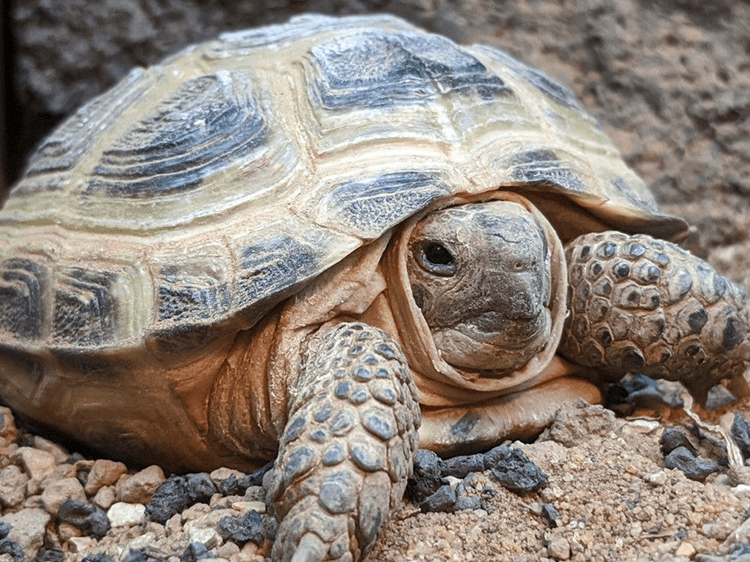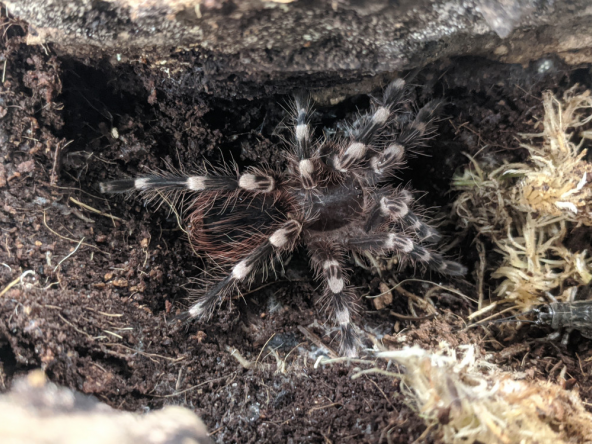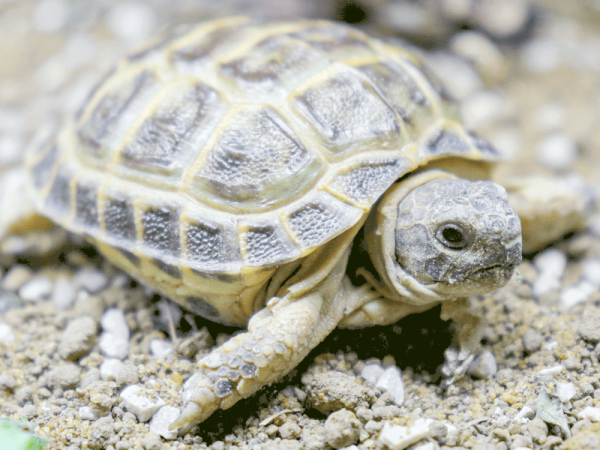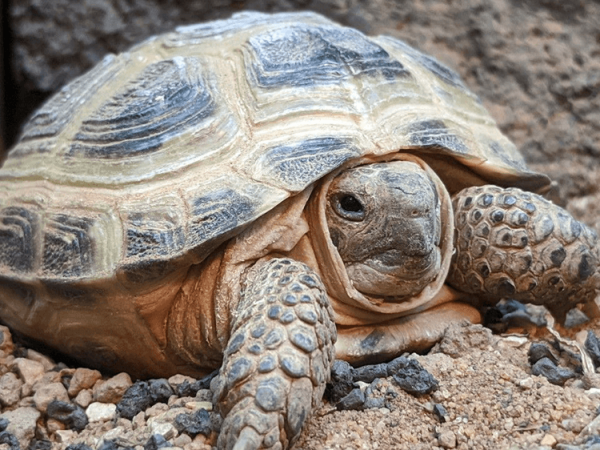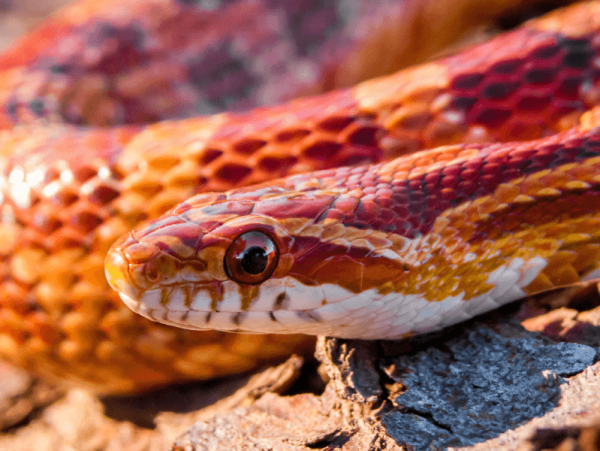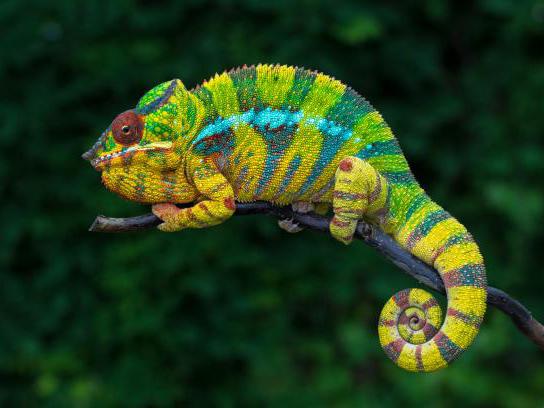Tortoise hibernation guide
Many of the most popular pet Tortoise species would naturally hibernate throughout the colder winter months in order to survive. In captivity, we have the capability to maintain the most ideal temperatures for our pet Tortoises year-round, so although our Tortoises generally don't need to hibernate to survive, many Tortoise owners choose to hibernate their Tortoise regardless, replicating the annual cycle they would experience naturally.
Many species of Tortoise hibernate, although some sold in pet shops do not, however, so it is important that you research your species thoroughly before you attempt to hibernate them. If you are unsure on your pet Tortoise species, consult an experienced vet or Tortoise organisation to help you identify them.
Some of the more common hibernating tortoises include the Hermann's tortoise (Testudo hermanni), the Horsfield or Russian tortoise (Testudo horsfieldii), the Mediterranean spur-thighed tortoise (Testudo graeca) and the Marginated tortoise (Testudo marginata).
Many commonly sold tropical Tortoises and desert Tortoises do not naturally hibernate. Examples of Tortoise species which do not hibernate include the Leopard tortoise (Stigmochelys pardalis), the Red footed tortoise (Chelonoidis carbonaria) and the Sulcata tortoise (Centrochelys sulcata).
Should you hibernate your Tortoise?
Tortoises must have sufficient reserves of body fat in order to have a successful hibernation. Therefore, it is more dangerous to hibernate very small Tortoises than it is to hibernate larger Tortoises, as they have far fewer reserves. If a Tortoise hibernates with insufficient fat stores, it is likely to die during the hibernation period, so you should never hibernate an underweight Tortoise.
It is also important not to hibernate a Tortoise that is suffering from any underlying health issues. We recommend taking your Tortoise to an experienced vet before hibernation for an all-round health check to ensure that they are healthy enough to survive the hibernation period.
What are the dangers of Tortoise hibernation?
The two main dangers of hibernation for captive Tortoises are hibernating for too long, and freezing, both of which can be avoided. It is important, however, to thoroughly check the size and health of your Tortoise and do plenty of research beforehand, as it is not without risk.
In the past, many Tortoise keepers chose to hibernate their Tortoises for too long which led to many smaller individuals not making it through. Small tortoises should be hibernated for around 8-10 weeks, and large Tortoises should be hibernated for no more than 16 weeks.
Many Tortoise keepers also often chose to hibernate their Tortoise in sheds or outhouses which often led to Tortoises freezing when the overnight temperatures dropped below freezing. It is now much more common to hibernate captive Tortoises in a controlled environment, eliminating this risk.
Preparing for Tortoise hibernation
If your pet Tortoise is old enough (usually at least 2-3 years), large enough and in good health, you may wish to start preparing them for hibernation in the late summer or early autumn.
To begin preparing your Tortoise for hibernation, you should start to reduce the ambient temperature of their enclosure and reduce their light intensity. This will replicate the lower peak temperatures and shorter days that would provide your Tortoise with cues that winter is on the way in nature.
As this begins to take effect, your Tortoise will become less active and have a reduced appetite, eventually refusing food, this is what we call the 'hibernation induction period'. This fasting period will usually last for 2-4 weeks depending on the size of your Tortoise. Larger tortoises will need to fast for longer to ensure that their last meal has been digested than small Tortoises. We do not recommend allowing the temperature to drop below 13°C (55°F) until the end of this fasting period.
Although you are not offering food to your Tortoise during this period, it is important to soak them 3-4 times weekly, both for hydration and to 'flush' urates from their bladder. The best way to do this is in a large tub or bowl filled with tepid water to around chin height on the Tortoise. You can then soak your Tortoise in the water, splashing small amounts of water over the shell and head.
The Tortoise hibernation period
We recommend hibernating your pet Tortoise in a temperature controlled environment, known as the fridge method. Many reptile incubators have a wide temperature range and can be used to create cooler environments along with the warmer environments they are often associated with for egg incubation. Older methods of incubation include burying or 'the box method', both of which can be risky due to the lack of control over the environment, so we recommend against such methods.
The first thing to do is prepare your hibernation box. For this, you can use a large tub or container filled with a suitable sand-soil mix substrate that your Tortoise will burrow down into. It is also important to ensure that your hibernation box has adequate ventilation in the form of air holes in the lid to allow for air circulation into and out of the box.
Once the fasting period is complete and you have prepared your hibernation box, you can set the temperature in your incubator to 5°C (41°F), place your Tortoise inside the incubation box and begin hibernating them. Consistently monitor the temperature in your incubator to avoid any issues, and take immediate intervention if the temperature approaches 2.5°C (36.5°F) or rise above 10°C (50°F) for extended periods.
You should also weigh your Tortoise regularly during the hibernation period, at least once a month. If your Tortoise loses more than 1% of it's total body weight in the space of a month, you should take action and end the hibernation process.
The hibernation period should last between 8-16 weeks depending on the size of your Tortoise, with smaller Tortoises being hibernated for less time than larger Tortoises.
Post-hibernation care
In nature, the appearance of spring would bring with it increasing outdoor temperatures and longer days. As the temperature rises towards 10°C (50°F), the metabolism of a wild hibernating Tortoise would begin to reactivate in readiness for waking.
To artificially replicate this, remove the hibernation box from from incubator, place it into a warm room and leave it for an hour or so. You can then remove your pet Tortoise from the hibernation box and place it into it's enclosure with the heat and light on as normal and allow it to heat up. Keep your Tortoise warm and offer them food, healthy Tortoises should feed within one week of waking from hibernation.
You should also soak your Tortoise post-hibernation for hydration - many Tortoise owners report having issues getting their Tortoise to drink after hibernation, but this should help.
While you're thinking about your Tortoise, why not take a look through our range of dry Tortoise foods?




